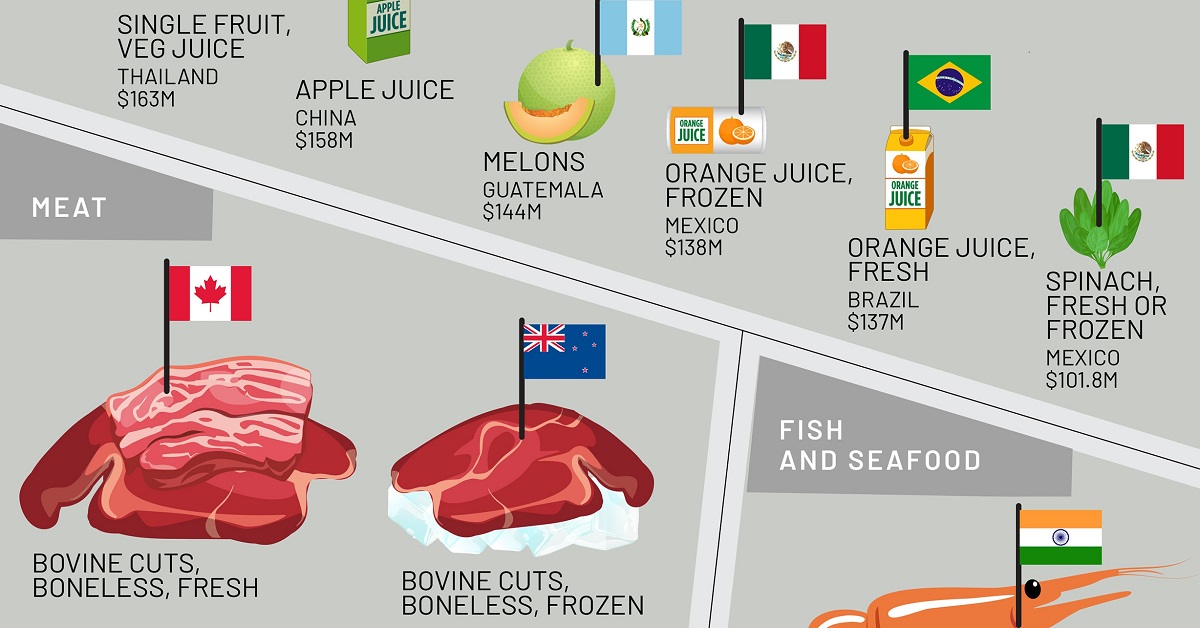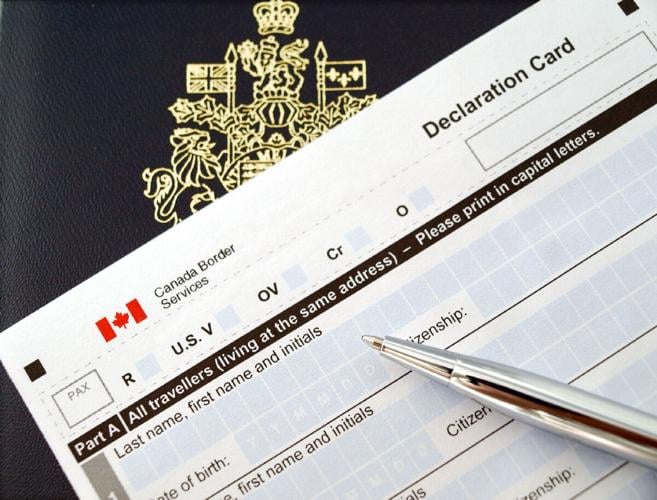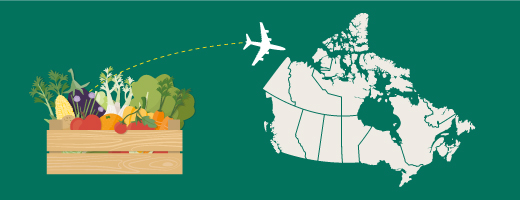Can I Bring Meat Into Canada
:max_bytes(150000):strip_icc()/what-can-i-bring-to-canada-1481670_v1-5ba4034bc9e77c0025a6d118.png)
The aroma of slow-smoked brisket clung to the air, mingling with the crisp scent of pine trees. Sarah, fresh off a family reunion in Texas, wrestled her suitcase onto the luggage carousel at Calgary International Airport, a hopeful smile playing on her lips. Nestled deep inside, wrapped in layers of ice packs and good intentions, was a taste of home she desperately wanted to share with her Canadian friends: a perfectly cooked, championship-worthy slab of barbecue.
But a nagging question lingered in the back of her mind: Can I actually bring this across the border? Navigating the intricacies of international food regulations can feel like traversing a minefield, leaving travelers uncertain about what culinary treasures they can legally transport into Canada.
The answer, as with most things bureaucratic, isn't a simple yes or no. It depends on a variety of factors, including the type of meat, its origin, and how it's packaged. This article aims to demystify the process, offering a clear and comprehensive guide to bringing meat into Canada, ensuring your delicious intentions don't lead to an unexpected encounter with border services.
Understanding the Rules: A Meaty Maze
The Canadian Food Inspection Agency (CFIA) is the primary authority responsible for regulating the import of food products, including meat. Their regulations are designed to protect Canada's agricultural sector, environment, and the health of its citizens.
The key principle to remember is that meat imports are generally allowed, but they are subject to specific conditions. These conditions vary depending on the animal species, the country of origin, and the type of meat product.
For example, beef from the United States is generally permitted, provided it meets specific requirements related to animal health and processing standards. However, beef from countries with a higher risk of diseases like Bovine Spongiform Encephalopathy (BSE), also known as "mad cow disease," may be subject to stricter restrictions or even prohibited altogether.
Permitted Meats: What's Usually Allowed
Generally, fully cooked and commercially packaged meat products from the United States are often allowed entry. This includes items like canned meat, shelf-stable sausages, and other processed meats that have undergone heat treatment to eliminate potential pathogens.
The CFIA also typically permits the import of certain fresh or frozen meats from the U.S., provided they are accompanied by the necessary documentation. This often includes an official inspection certificate from the USDA, confirming that the meat meets Canadian standards.
For meat originating from countries other than the U.S., the rules can be more complex. Many countries have specific agreements with Canada regarding meat imports, outlining the conditions under which their products are permitted entry. It's crucial to consult the CFIA's website or contact their import service center for detailed information on specific countries.
Restricted Meats: What to Watch Out For
Certain types of meat are subject to stricter restrictions or are completely prohibited due to concerns about animal diseases. Pork from countries affected by African Swine Fever (ASF), for instance, is often heavily regulated to prevent the spread of this highly contagious disease.
Similarly, poultry products from regions experiencing outbreaks of avian influenza may face restrictions. The CFIA closely monitors these outbreaks and updates its import regulations accordingly.
Wild game, such as venison or wild boar, can also be subject to specific rules, particularly if it hasn't been commercially inspected and processed. These regulations are in place to prevent the introduction of diseases like Chronic Wasting Disease (CWD), which affects deer, elk, and moose.
Navigating the Border: Tips for Smooth Sailing
Before packing your prized cuts of meat, it's essential to do your homework. Start by visiting the CFIA's website (www.inspection.gc.ca) and searching for information on importing meat products. Their Automated Import Reference System (AIRS) tool can be particularly helpful in determining the specific requirements for your situation.
Ensure that all meat products are clearly labeled with their country of origin and a description of the contents. Keep receipts and any other documentation related to the purchase and processing of the meat, as border services officers may request them.
Be prepared to declare all meat products upon arrival in Canada. Failure to declare can result in penalties, including fines and the seizure of your goods. Honesty is always the best policy when dealing with border officials.
If you're unsure about whether a particular meat product is permitted, it's always best to err on the side of caution and leave it behind. You can also contact the CFIA's import service center for clarification before your trip.
The Bigger Picture: Protecting Canada's Food Supply
The regulations surrounding meat imports are not arbitrary; they play a crucial role in protecting Canada's agricultural sector and public health. By preventing the introduction of animal diseases, the CFIA safeguards the livelihoods of Canadian farmers and ranchers.
These regulations also contribute to maintaining the integrity of Canada's food supply, ensuring that consumers have access to safe and high-quality meat products.
The economic impact of a major animal disease outbreak could be devastating, costing billions of dollars in lost production and trade. Strict import controls are therefore essential for mitigating this risk.
Furthermore, responsible import practices contribute to broader environmental sustainability goals. By preventing the introduction of invasive species and diseases, we can protect Canada's biodiversity and natural ecosystems.
Beyond the Border: A Taste of Home
While navigating the regulations can seem daunting, the goal is to ensure safe and responsible importation, not to deprive travelers of their culinary delights. With proper planning and adherence to the rules, it is possible to bring certain meat products into Canada legally and safely.
Sarah, armed with her research and a clear declaration, approached the customs officer with a confident smile. She explained her situation, presented her documentation, and waited patiently for the officer's assessment.
Whether she was ultimately able to share her Texas barbecue with her friends in Calgary or not, her diligence and respect for the regulations exemplified a responsible approach to international travel, ensuring that the taste of home wouldn't compromise the safety and security of her adopted country.
Ultimately, understanding and respecting import regulations is a small price to pay for protecting Canada's food supply, environment, and the health of its citizens. So, the next time you're tempted to bring a meaty souvenir across the border, remember to do your homework and declare everything. You might just be able to enjoy a taste of home while contributing to a safer and more sustainable future for all.













:max_bytes(150000):strip_icc()/bringing-food-home-from-the-uk-1661519_v3-5bcf5e01c9e77c0051c565a4.png)




